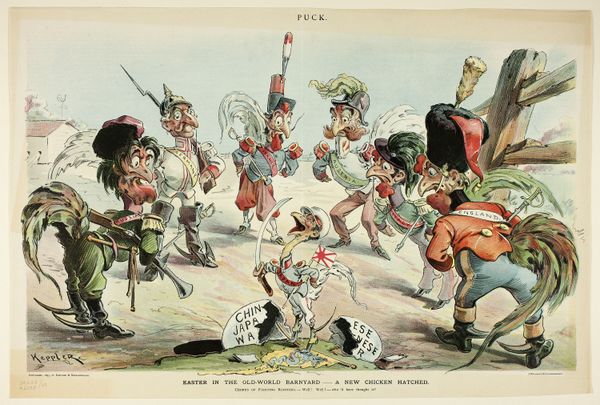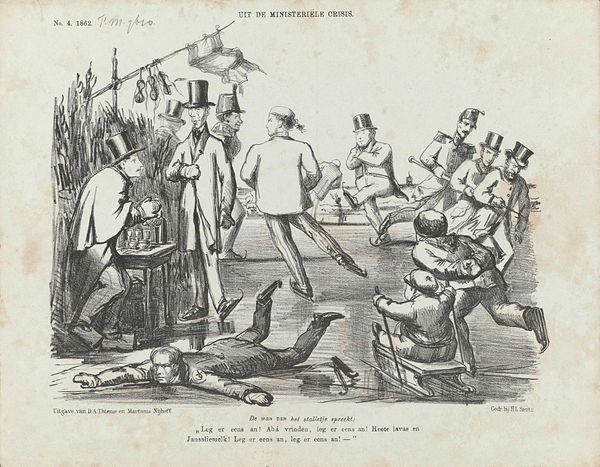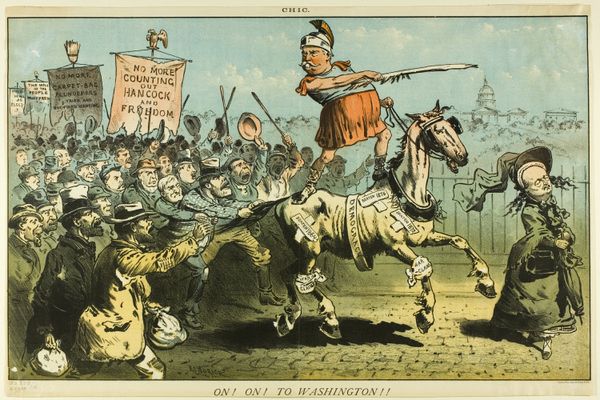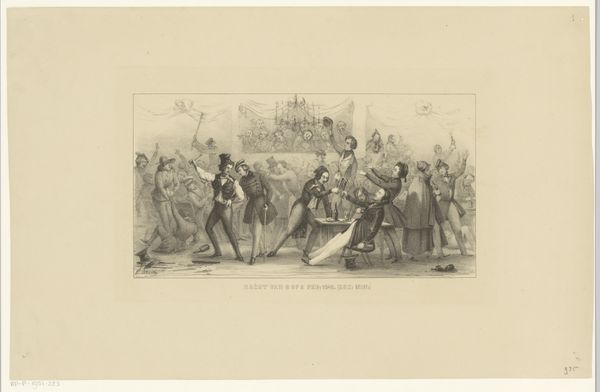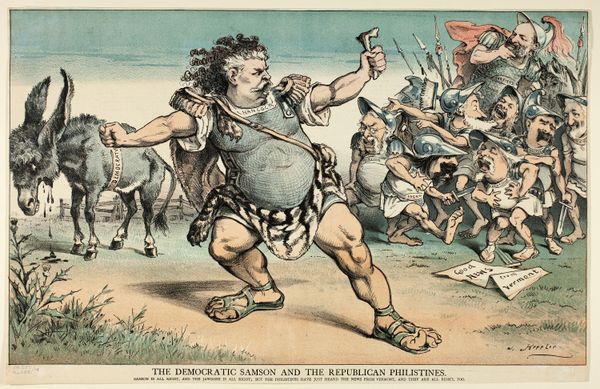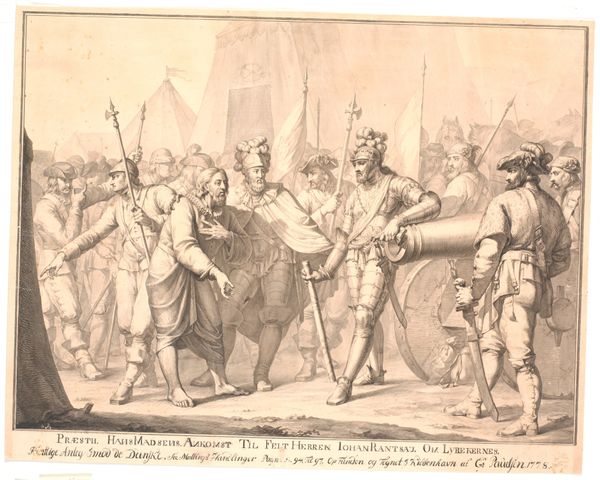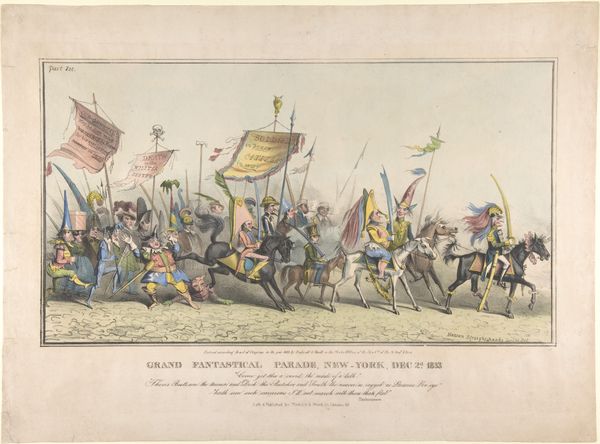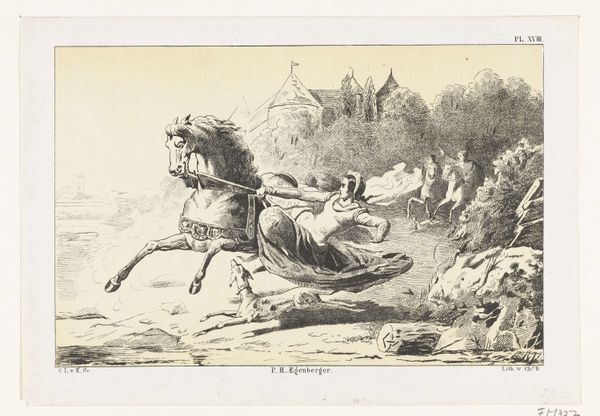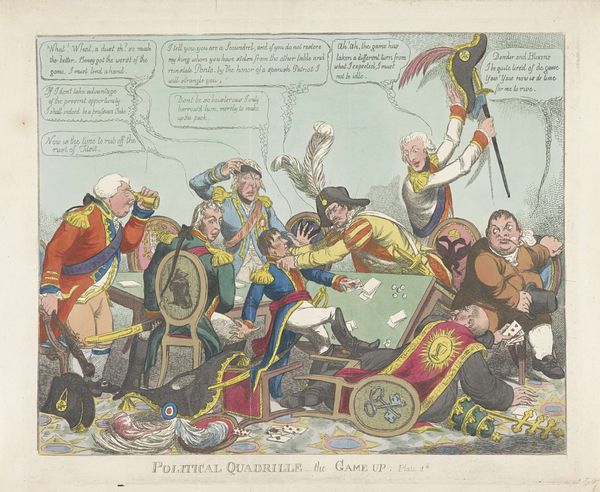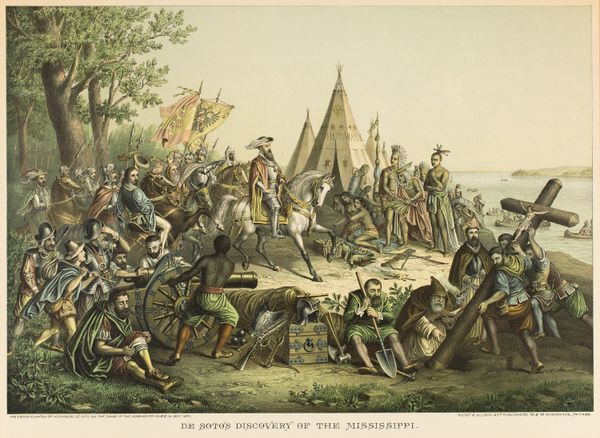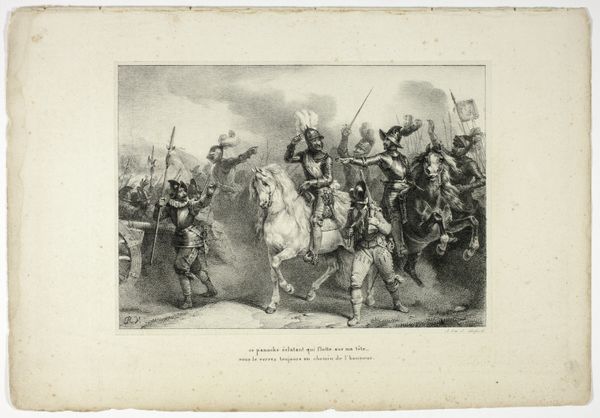
drawing, lithograph, print
#
drawing
#
lithograph
# print
#
caricature
#
genre-painting
Dimensions: 355 × 495 mm
Copyright: Public Domain
Curator: Here we have "The Triumph of Boodle" by Joseph Keppler, a lithograph print whose date is unknown, in the collection of the Art Institute of Chicago. It’s…well, it’s quite a spectacle. Editor: Immediately striking. I am getting the sense of overwhelming pomp concealing something deeply corrupt; this ostentatious display seems rooted in inequality and…well, subjugation. Curator: Exactly. Note the formal elements, the dramatic diagonals of the spears against the horizontality of the figures and composition, leading the viewer’s eye rightward, mimicking the progression of the parade. This forces us to consider Keppler’s use of line and form. Editor: The very caricature feel highlights anxieties about political processes, right? "Boodle," as the corpulent figure in the chariot is labeled, represents graft. That shackled figure embodies what Boodle has conquered: something like Honesty, or the Common Good. You see a lot of anxiety about rapid industrialization, immigration, and widening class disparities expressed in the image. The print pulls from genre painting and obviously Roman triumphal parades. Curator: Yes, note also Keppler's expert handling of lithography here: The range of tonal variation and detailed linework serve both a visual clarity and a dramatic expressiveness. We see that best, perhaps, in the contrast between Boodle and his defeated victim. The use of caricature, flattening forms for exaggerated effect, becomes quite evident, lending to an almost grotesque, but effective satire. Editor: Exactly; caricature underscores the message of systemic corruption, challenging power dynamics, and promoting awareness. "The Triumph of Boodle" goes beyond simple artistry to deliver a strong critique about American politics and its susceptibility to corruption during Keppler’s lifetime. We need more artists addressing these social questions even now. Curator: True enough. Regardless, one walks away admiring how deftly Keppler marshaled line, tone, and form to make such a striking, visually persuasive statement. Editor: It is a striking demonstration, as you said, that artistic technique serves critical social commentary; an amazing commentary on political satire through the ages.
Comments
No comments
Be the first to comment and join the conversation on the ultimate creative platform.
